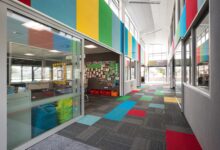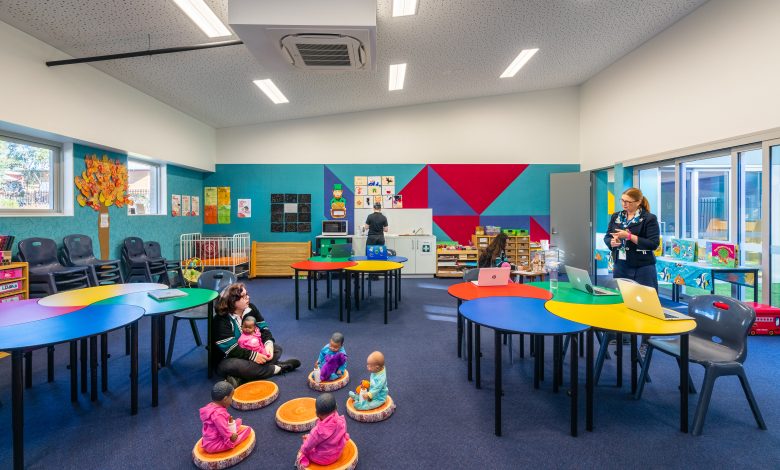
Did you know poor acoustic environments could be affecting your students’ academic performance, and the wellbeing of teachers and students?
Classroom acoustics can play a significant part in the learning experience for ākonga, and may be more crucial than educators realise.
For one, a lack of soundproofing could mean extraneous noise becomes distracting. Without balanced acoustics, tamariki may simply be unable to hear instructions or calls to attention.
Read the Term 3 edition of School News HERE
Children are more sensitive to noise and reverberation when they are required to undertake a task that involves listening comprehension. This can affect literacy levels in young children who are just beginning to acquire these skills.
The most common way to measure acoustic performance is with a microphone. A variety of factors are included, such as reverberation time, sound pressure level and speech transmission index.
Reverberation time is often used as a primary indicator of classroom acoustic quality. It’s measured as the time taken for a given sound to fade to 60 dB after the sound-source stops. When reverberation time increases, teachers need to raise their voices to be understood, as regular indoor noise is amplified due to sound reflection. This can have negative effects on educators’ wellbeing, as well as children, who find it harder to listen to instructions.
The World Health Organisation (WHO) has noted that the physical environment of schools can be a stressful environmental factor, with high levels of noise contributing to adverse behaviour and moods such as increased irritability and aggression. The effects are amplified for children with learning difficulties.
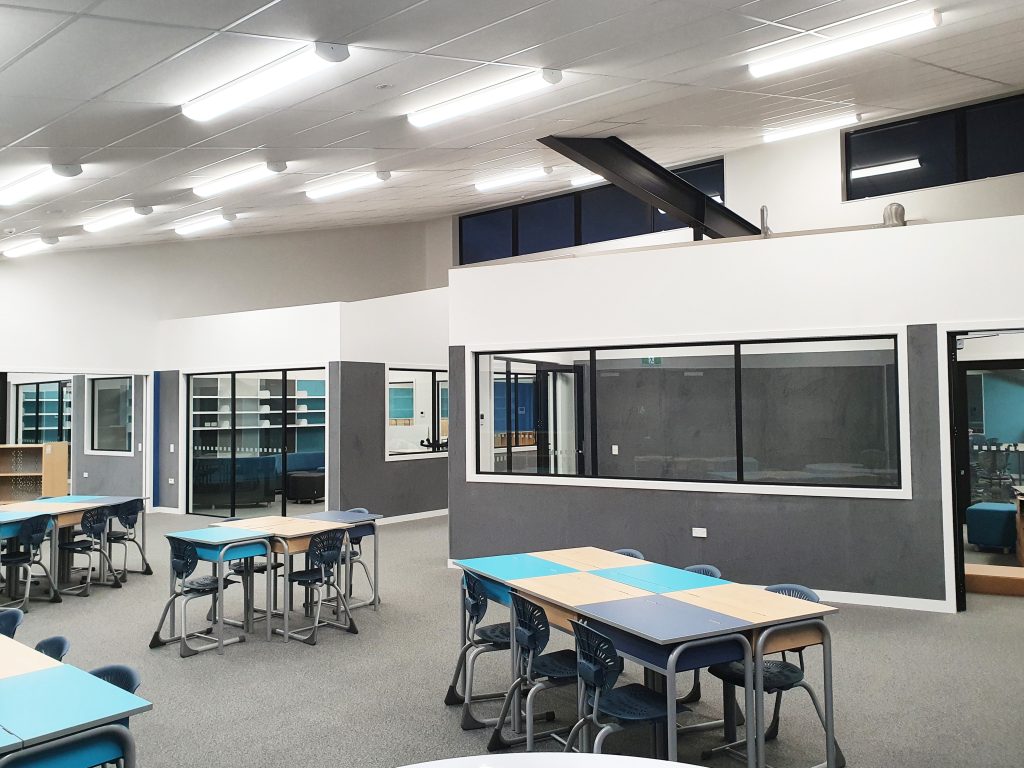
So, how does a good acoustic environment measure up? Reverberation time should be shorter, and sound pressure level should be high during teaching time, but lower during independent activity. To achieve this, schools can investigate installing sound absorbing materials, like ceiling tiles, carpet, and acoustic wall-panels.
Another consideration when designing acoustic environments of the classroom is the Lombard effect. It describes the process whereby one child speaks, and as more join their voices grow steadily louder to ensure they can be heard over others. A good acoustic environment prevents this, as speech is intelligible at a lower volume.
Schools or kura undergoing renovations or additions might wish to consider acoustic performance in the initial design. For one, the physical location of new buildings should be carefully considered. Is it by the road, for example, or too close to another classroom? Is it beside a sports complex? What sort of learning will happen in this classroom?
Depending on these factors, floors should be carpeted, and the acoustic environment could be modelled before the class is constructed. Adjustments to design plans could be made to ensure an optimal environment for teaching and learning.
In other school contexts, such as auditoriums, acoustics can be notoriously difficult to manage. Ideally, auditoriums should be constructed with both macro and microenvironments in mind.
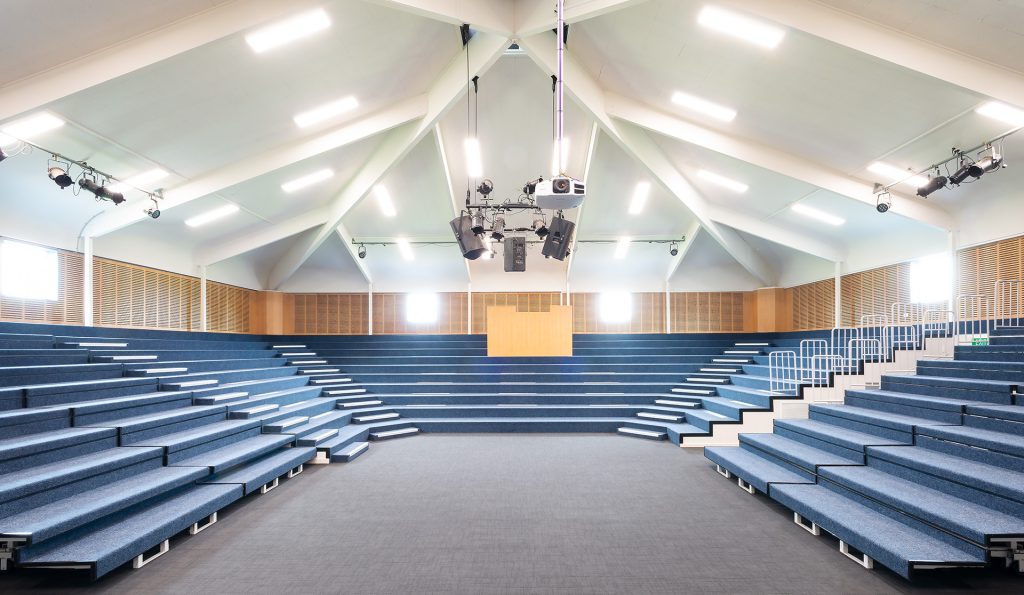
Macroenvironment management refers to ensuring that the surrounding site is not near an unwanted noise source; and microenvironment to the inside of the auditorium providing a sufficient acoustic environment for the requirements of the space. There are acoustic standards that auditoriums can be measured by, that is, the level of ambient sound inside the auditorium should not exceed a certain level. Like classrooms, speech intelligibility is important, especially when addressing a larger audience. These factors can be controlled via sound-dampening materials, the shape of the auditorium and stage, and the height of the ceiling.
For more on designing an optimal acoustic environment, School News spoke to some experts in acoustics.
Ben Hutter, National Sales Manager at Autex, said acoustics play an incredibly important role in the modern classroom. “A classroom with inadequate acoustics will be a space full of distractions for students,” he said.
“One of the big issues for children is background noise. This can make it hard for them to focus on work and negatively impact voice intelligibility from their teachers and peers. As a result, there is an increased chance of them missing or incorrectly understanding what their teachers are telling them.
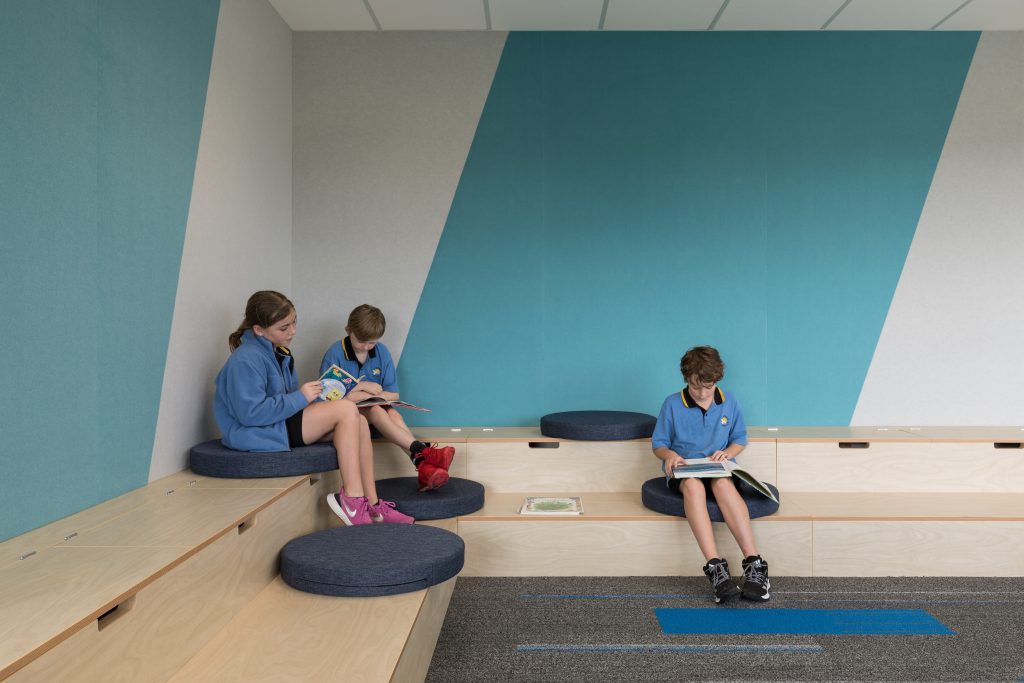
“For years now people have known of the importance of sound absorption in classrooms, but the most recent Designing Quality Learning Spaces standard shows that there is a need for different types of absorption for different sound frequencies and the positioning of these materials. For instance, using thicker materials to absorb a broader range of frequencies and the placement of these products makes for well-balanced spaces for learning.”
Spaces like auditoriums pose a separate issue, Mr Hutter said. “Acoustic products with high performance sound absorption should be used to help reduce what is often a larger amount of noise at a range of different frequencies. The positioning of these products is critical to make sure sound can travel clearly to the audience.”
Mike Latimer, Acoustic Lab-Lead at Canterbury Acoustic Testing Services, consultant to T&R Interior Systems, said good acoustic design is critical in a learning environment, and should be carried out by an acoustic consultant.
“Long reverberation times lead to a noisy teaching environment. Reflected sound builds up, and pupils and teachers start to raise their voices to be heard, increasing the noise level in the room. Reverberation can be controlled with the correct quantity of sound absorption materials. This is often calculated by an acoustic consultant, using AS/NZS 2107:216 Acoustics-Recommended design sound levels and reverberation times for building interiors, or Designing Schools in New Zealand, Design for quality learning spaces (DQLS),” Mr Latimer said.
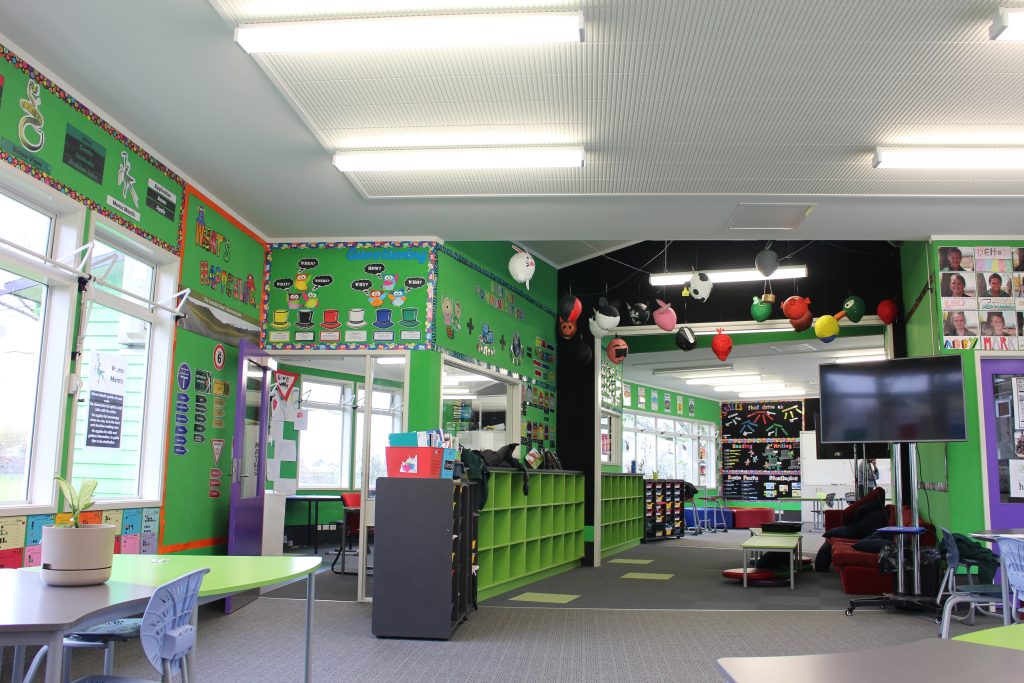
“Commonly used materials are suspended ceiling tiles, carpet, acoustic wall panels, curtains, and soft furnishing. Placement and type of absorber is critical, and must be distributed evenly around the room.
“High background noise can interfere with communication. This can come from HVAC, roads, aircraft, and other school activities. There are design levels that should be followed and are available from the AS/NZS standard and DQLS mentioned above.
“In large open learning environments, managing class activities can help keep internal noise levels to an acceptable level. This can be done with the use of breakout spaces, scheduling noisy activities so they don’t coincide with quiet activities, and the use of absorbent screens.
“Often large open spaces such as auditoriums and gymnasiums are combined to form a multipurpose space. This makes selection and placement of sound absorption more critical. Other acoustic products such as reflectors or diffusers may be required.”
Andre Cowan from Asona said speech intelligibility in classrooms is crucial as students need to hear and understand the teacher. “To address factors which may impede this, schools can implement sound-absorbing materials, such as 50mm thick acoustic ceiling and wall panels, to provide balanced sound absorption across the 500 to 2000 Hz. These materials help reduce noise reflections and improve speech intelligibility. Proper insulation and sealing of doors and windows can minimise external noise intrusion. Additionally, strategic classroom layout and design can help optimise sound distribution and minimise disruptions.
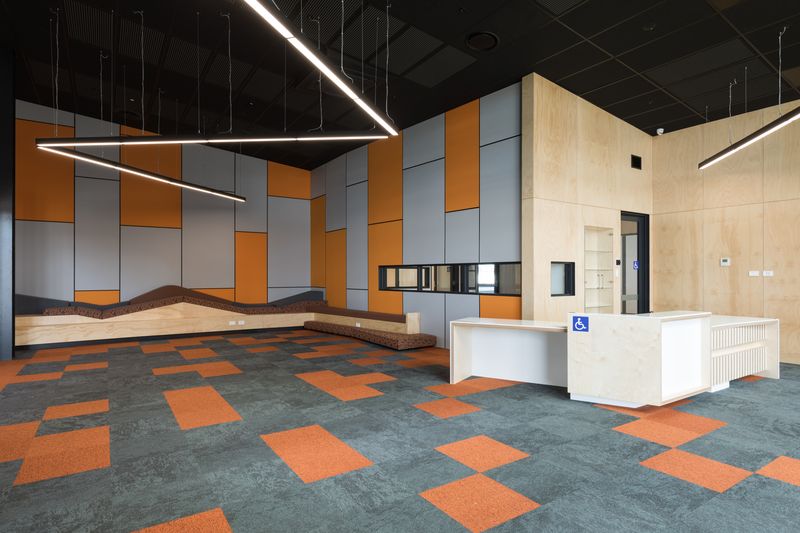
“When building or refurbishing a learning space, proper design and layout is important. The shape and dimensions of the classroom should be planned to minimise sound reflections and optimise sound distribution.
“Employing soundproofing techniques, such as insulation, double-glazed windows, and solid doors with acoustic seals can effectively minimise external noise intrusion. Educating teachers and students about the importance of maintaining a quiet learning environment is also important,” Mr Cowan said.
“Large spaces like auditoriums and gymnasiums present challenges due to their size and high occupancy. To ensure optimal sound quality, acoustic design should be considered, including the use of diffusers, absorbers, and reflective surfaces.
“Installing professional-grade audio systems, including microphones, amplifiers, and speakers, designed specifically for large spaces can ensure even sound coverage and clarity. Portable sound-absorbing panels or curtains can also be strategically placed to reduce reverberation and enhance speech clarity during events or performances.”
GreenStuf spokesperson Ben Hutter said when working with educational spaces the reverberation within a classroom is often the first issue people think of.
“While this is an important area to focus on, we also need to think of the ambient noise levels within the space. Sounds from traffic, rain noise, and people outside of the classroom can also cause distractions.”
Acoustic treatment, then, is important in both the external envelope of the school and indoors through partition systems.
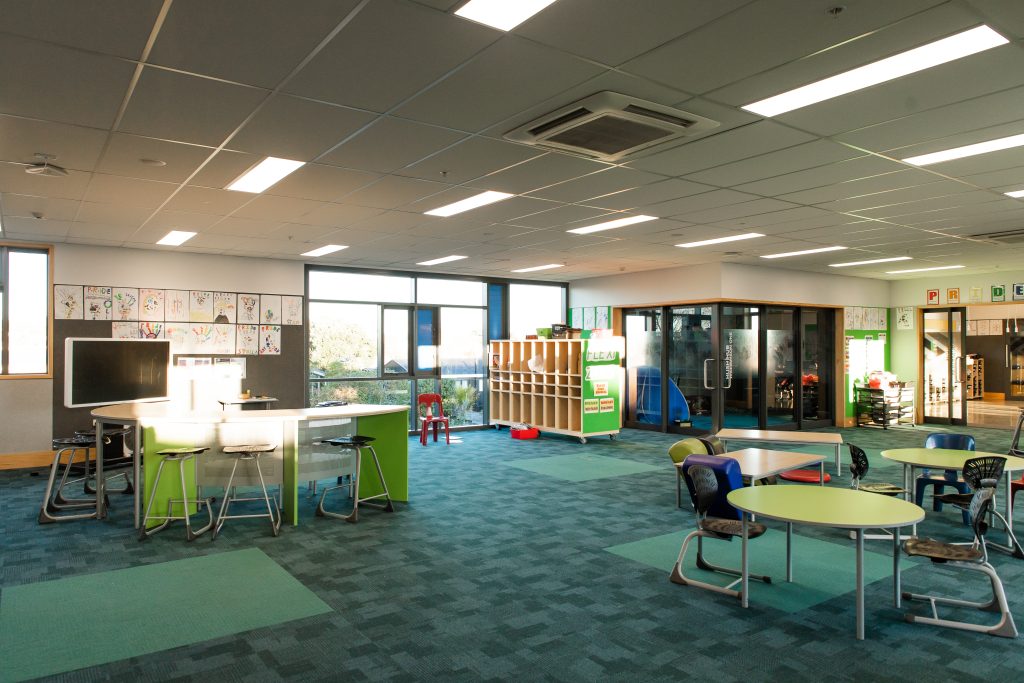
“One of the considerations when looking to achieve balanced acoustics within a classroom is location. Is the space near a busy road or even high traffic areas of the school? Do your partitions indoors meet the minimum requirements of the Designing Quality Learning Spaces standards? These are the types of questions to start with. You also need to investigate the weak points of a wall or ceiling. Using products like a baffle block are a cost-effective way to remove sound transfer between classrooms, and for retrospectively improving acoustic privacy,” Mr Hutter said.
When dealing with larger space likes auditoriums and gymnasiums, there are a few factors to consider. “Keeping noise from entering the space is important, but due to their purpose, these spaces often create a lot of noise too. Through adding mass and insulation into your external envelope, you can help keep noise inside while removing any additional noise from external sources.”








